Landschlacht, Switzerland, 6 December 2017
Is there such a thing as an indispensable man?
This is a question I have often asked myself when considering both my life and the lives of the famous.
I ask myself this question recently as I am, once again, forced to remain at home in bed with, yet another cold that has made both barista work and teaching impractical as I have been reduced to a coughing, sneezing, aching, quivering jellyfish of a man unfit and undesirable for public encounters.
My voice sounds tortured and hoarse as if it is painfully emerging from a long tunnel.
My appearance is akin to a homeless street person and our apartment reflects this.
The wife mocks the man cold, but hers is a gender that endures menstruation on a monthly basis and usually survives the incredible ordeal of child birth with little hesitation to repeat or memory of the event.
Hers is a mind of multiplicity handling every moment and memory simultaneously, while my mind is a series of boxes which are opened only one at a time, so when illness strikes all my focus is upon how truly horrid I feel.
A woman with a cold is simply a woman with yet another complication in her life, for she will incorporate the cold as part of life´s burdens she must bear and will further complicate her life with tortured emotions about the selfishness of her having a cold keeping her from doing her other duties.
A man, though he is aware of the selfishness of having others assume his duties, will moan and groan impatiently focused on his recovery, even so his conscience is little disturbed about staying at home until he deems himself fit to tackle the world again.
I think about work, of course, and consider what my absence will mean to my students and colleagues.
I know that there are other teachers who could teach in my place and that a barista can be replaced.
But does that mean my presence then is insignificant?
I don´t believe so.
For though I am far from being the most competent or qualified barista or teacher, I possess an entertaining and compassionate personality that I believe my students and colleagues value.
But short of historical accident thrusting me into greatness, I am self aware enough to realise that my eventual absence from existence will not impact history or much of humanity that significantly.
Though the life of my wife might have been greatly different without me in it, would she have been happier or sadder had we never met?
If I had not survived an accident with an axe during my teenage years, or if I had perished on the side of the mountain when I was stranded overnight three years ago, would the world have noticed my absence?
My social circle was and remains small.
I would have been missed by a few people, but I believe they would have found the strength to carry on without me.
I don´t believe I need an angel Clarence to show this George Bailey how It´s a Wonderful Life and how vastly different reality would be had I never existed.


Above: Henry Travis as angel Clarence Oddbody (left) and James Stewart as George Bailey (right), from It´s A Wonderful Life (1946)
Certainly each man leaves his mark on the world by how his actions have affected others.
A man´s greatness could even be said to be measured by how many others his actions affected.
My mind often wonders how reality might be had certain great men never existed or didn´t exist at the time when they were most influential.
The recent resurgence of interest in Winston Churchill (1874 – 1965) – with this year´s movies Darkest Hour (starring Gary Oldman) and Churchill (starring Brian Cox) and last year´s Churchill´s Secret (starring Michael Gambon) – have led me to wonder would the world of today be different had Churchill not been present at those moments of yesterday when he made the most impact?

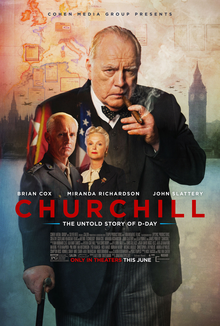
This hypothetical “What If?” exercise is not so far fetched….
On a holiday in Bournemouth in January 1893, Churchill fell and was knocked unconscious for three days.

Churchill saw action as a soldier and war correspondent and risked his life in India, the Sudan and South Africa.

Above: Battle of Omdurman, Sudan (2 September 1898), where Churchill took part in a cavalry charge
It remains uncertain whether Churchill´s life was in any danger when he was present at the January 1911 Siege of Sidney Street when Latvian anarchists wanted for murder holed up in a house and resisted arrest.

Above: Winston Churchill (highlighted) at Sidney Street, 3 January 1911
And it is also unclear whether Home Secretary Churchill gave the police any operational orders during the Siege, though it has been suggested that when the house caught fire Churchill prevented the fire brigade from dousing the flames so that the anarchists burnt to death.
“I thought it better to let the house burn down rather than spend good British lives in rescuing those ferocious rascals.”
On 12 December 1931, during a lecture tour for his writing, Churchill, while crossing New York City´s Fifth Avenue, was knocked down by a car.

Above: The Empire State Building, completed 1931
Had Churchill not survived these events to become Prime Minister (1940 – 1945 / 1951 – 1955), would Britain have remained resolute against Germany during the Second World War?
How indispensable was Churchill to the world?
This question was certainly paramount in my mind when my wife and I visited the Churchill War Rooms six weeks ago….

Above: An external view of the New Public Offices building, the basements of which were chosen to house the Cabinet War Rooms
London, England, 24 October 2017
In 1938, in anticipation of Nazi air raids, the basement of the Treasury building on London´s King Charles Street was converted into “war rooms”, protected by a three-foot-thick concrete slab, reinforced with steel rails and tramlines.
It was here that Prime Minister Winston Churchill directed operations and held cabinet meetings for the duration of World War II.

By the end of the War, the six-acre site included a hospital, canteen and shooting range, as well as sleeping quarters.
Tunnels fan out from the complex to outlying government ministeries.
It is rumoured there are also tunnels to Buckingham Palace itself, allowing the Royal Family a quick getaway to exile in Canada (via Charing Cross Station) in the event of a Nazi invasion.
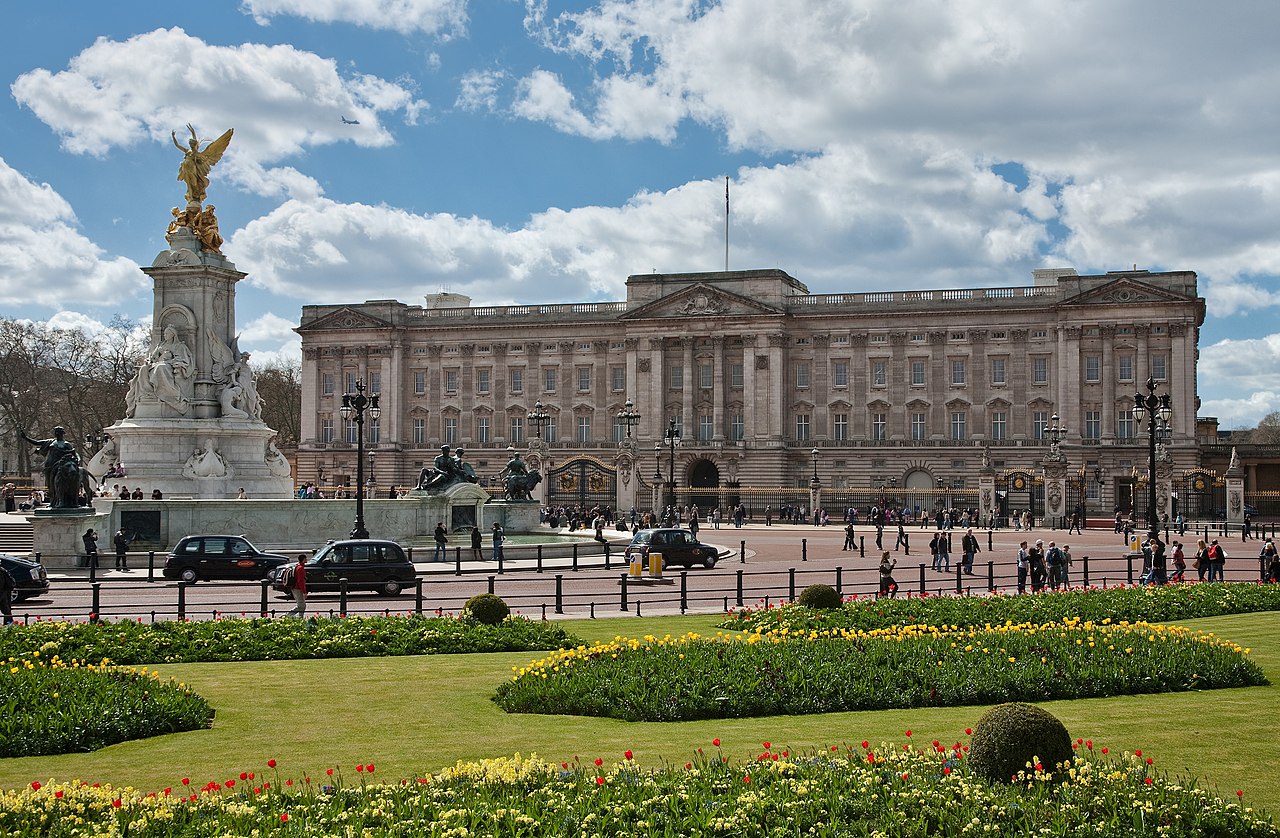
Above: Buckingham Palace
Walking the corridors of the Churchill War Rooms and exploring its adjacent Churchill Museum are experiences that live long in the memory.
Every corner tells a story.
Today we take for granted the idea of an underground command centre.
How else can political and military leaders run a country and control armed forces, safe from enemy bombardment?
But the Second World War was the first time that Britain faced such a concentrated aerial threat.
Should there be some sort of central war room?
Where should it be?
How should it be protected?
Who should work there?
What space and equipment would they need?
What exactly would they be doing?
Most of these questions began to be answered only in the final fraught months before Britain went to war.

Many of them were still being answered during the War itself, even as bombs rained down over London and the threat of invasion loomed.
The story of the Churchill War Rooms is therefore one of improvisation in the face of deadly necessity.
After the First World War (1914 – 1918), the British government adopted a “ten-year rule”.
Until instructed otherwise, all departments should assume that the country would not go to war again for at least a decade.
Even so, some thought was given to how a future war might be fought.
In 1924, government experts predicted that London would be bombarded by up to 200 tons of bombs in the first 24 hours of a world conflict.
Casualities would be high and the country´s political and military command structure could be severely disabled.
Partly due to the ten-year rule, little was done to heed this warning until 1933 when a belligerent Adolf Hitler rose to power in Germany.

Above: Adolf Hitler (1889 – 1945)
It came as a complete shock when Hitler declared his intention to have Germany leave the League of Nations, the forerunner of today´s United Nations.

War within the next decade suddenly seemed much more possible and the question of national defence became a priority.
In March 1938, Germany annexed Austria, adding to international tension.
General Hastings Ismay, Deputy Secretary of Britain´s Committee of Imperial Defence, immediately organised a search for an emergency working refuge to house the Cabinet and the Chiefs of Staff in case of a sudden attack.
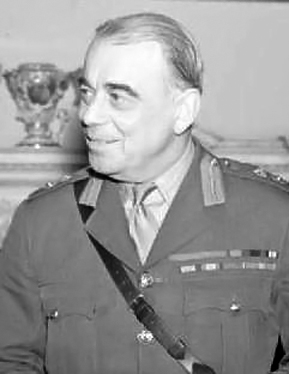
Above: Hastings Ismay (1887 – 1965)
Plans were still in a confused state in late May 1938, when the alarming news was received that German troops were massing on the Czechoslovakian border.
There might be war any day, but still no war room.
On 31 May 1938, the site was confirmed, a site conveniently close to both Downing Street (the Prime Minister´s residence) and Parliament.
It was thought that the steel structure of the Treasury building above the War Rooms would provide extra protection against bombs, but a direct hit on the site would have been catastrophic.
From June to August 1938, work on the War Rooms involved clearing rooms, sandbagging alcoves, replacing glass doors with teak, building brick partitions, installing telephone lines and estabishing a connection with the BBC.
As the site was situated below the level of the Thames River, flood doors had to be fitted and pumps installed.
By the end of August, the Map Room was manned and tested and plans were underway for airlocks and steel doors to defend against gas attack.

Above: The Map Room, Cabinet War Rooms
There could be no hesitation or pause in these preparations.
Hitler had sparked a new crisis on the Continent by threatening to annex part of Czechoslovakia.
Prime Minister Neville Chamberlain attempted to defuse the situation by diplomatic means.

Above: Neville Chamberlain (1869 – 1940), British PM (1937 – 1940)
On 30 September, Hitler signed the Munich Agreement – heralded by Chamberlain as a guarantee of “peace for our time”, but the Central War Room was theoretically ready for use.

Above: Neville Chamberlain showing the Anglo-German Declaration, aka The Munich Agreement. guaranteeing “peace for our time”, Heston Air Force Base, England, 30 September 1938
It would have been desperately uncomfortable for anyone working there, as the ventilation system was poor, there were no overnight accommodations, no bedding, no kitchen, no food, no toilets or washing facilities.
Work continued on the War Rooms.
On 23 August, Hitler signed a non-aggression pact with Russia, leaving the way free for him to attack Poland.
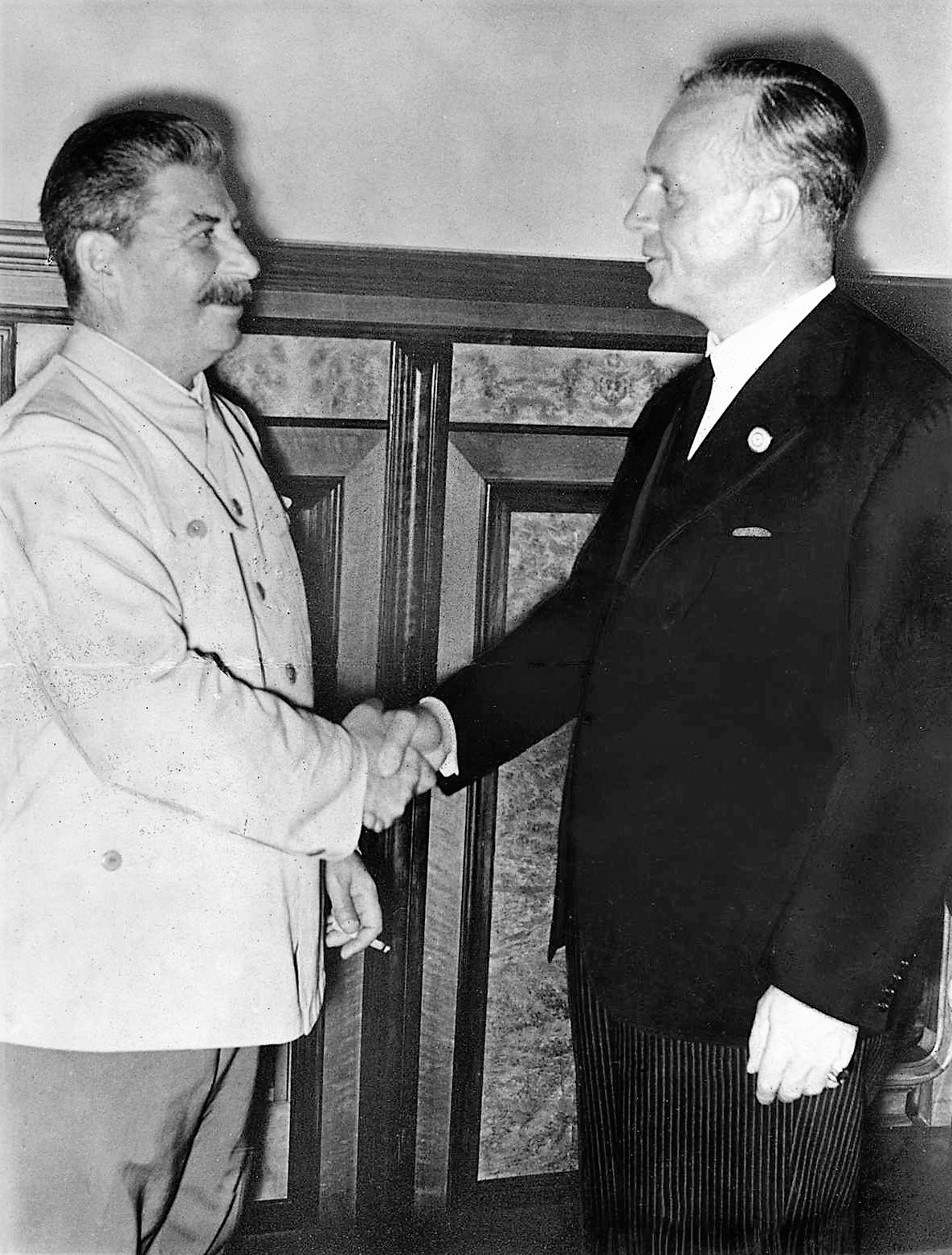
Above: Soviet Premier Stalin and German Foreign Minister Joachim von Ribbentrop, after the signature of the (Vyacheslav) Molotov – Ribbentrop German-Soviet Non-Aggression Pact, 23 August 1939
On 27 August the Central War Room was officially opened.
On 1 September, Hitler attacked Poland.
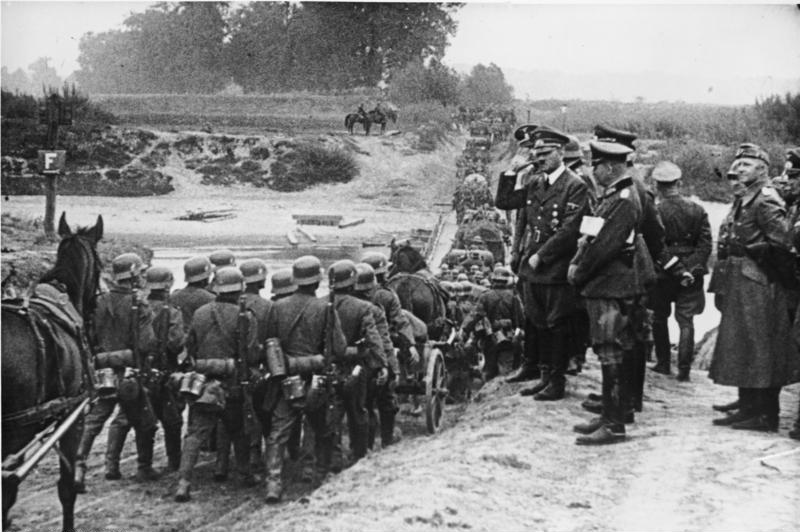
Above: Adolf Hitler reviewing the troops on the march during the Polish campaign, September 1939
Two days later, Britain was at war.
The immediate bombardment of London that had been expected for so long failed to materialise in the first nine months of the War, though the War Rooms were operational.
A botched land campaign in Norway in April 1940 and Germany´s sudden attack on the Netherlands on 10 May caused Chamberlain to resign and Churchill to take his place.
A few days later, as British Forces were driven back towards the French coast, the new Prime Minister visited the Cabinet War Room and declared:
“This is the room from which I will direct the war.”
Above: Cabinet War Room
In the summer of 1940, as the fall of France was followed by the Battle of Britain for aerial supremacy over southern England, Britain stood at risk of imminent invasion.

Above: German Heinkel HE 111 bombers over the English Channel, 1940
On 7 September 1940, Germany launched the Blitz – a sustained bombing campaign against British towns and cities, with London the chief target.

Britain weathered the Blitz for nine long months.
When the Blitz failed to secure victory over Britain, Hitler turned his attention to the east, launching an invasion of the Soviet Union on 22 June 1941.
Britain was no longer fighting the Nazis alone.
When, on 7 December 1941, Japan attacked the American fleet at Pearl Harbour, the United States entered the War, changing the fortunes of Britain.

Above: The Japanese attack on Pearl Harbour, Hawaii, USA
The War Rooms began deception plans intended to divert enemy resources away from genuine Allied operations.
This would play a crucial role in the success of Operation Overlord – the Allied invasion of Normandy on 6 June 1944.

The success of the D-Day landings helped to turn the tide of war against the Nazis, but they were not finished in attacking Britain.
On 13 June 1944, the first V1 flying bomb hit London, bringing a new threat to the capital.

Above: A V1 guided missile
Over the winter of 1944 – 1945, the V1 flying bomb attacks were gradually superseded by the more destructive V2 flying bombs.

Above: A V2 rocket
By the end of March 1945, most of the V2 production factories had been overrun by the unstoppable Allied advance towards Berlin.
Adolf Hitler spent the final weeks of the War sheltering in his bunker as Berlin came under attack from Stalin´s armies.
After the fall of Berlin, the Allies declared victory in Europe on 8 May 1945.
By the time Japan surrendered on 15 August, Churchill was no longer Prime Minister having lost the General Election on 26 July.
On 16 August, after six years of continuous use, the War Rooms were simply and suddenly abandoned.
Their historic value was recognised and were mostly left undisturbed.
The preserved rooms were declared a national monument in 1948, with free guided tours given to people who had written to the Cabinet Office.
This practice continued until 1984 when the Imperial War Museum was asked to turn the site into a formal Museum.
Millions of visitors have since walked its corridors, tracing the steps of Churchill and the many men and women – both military and civilian – who helped run this underground complex.
The Churchill Museum was added to the Cabinet War Rooms in 2005 and this expanded Museum was later renamed the Churchill War Rooms.
It has to be said that the Churchill War Rooms is a fascinating place for it is filled with intimate details that bring home the immediacy of those times…
- The sugar cubes hoarded by a Map Room officer
- The noiseless typewriters that Churchill insisted be used by his staff
- Accounts of what it was really like to eat, sleep and work below the streets of London as German bombs fell all around.
- The coloured lights in the Cabinet War Room that signalled an air raid and the ashtrays positioned within easy reach around the table and the scratch marks on the arms of Churchill´s chair that show how strained the Cabinet Room could become
- The multi-coloured phones where the men of the Map Room could follow every thrust and counterthrust of the War
- The actual door that Churchill walked through at 10 Downing Street
- The tiny Transatlantic Telephone Room where Churchill used to speak in secret to the US President
- Churchill´s famous “siren suit”, a zip-up coverall that Churchill began wearing for comfort from the 1930s onwards
- The Union Flag which was draped over Churchill´s coffin during his State Funeral which was broadcast around the world

Above: Grave of Winston Churchill, St. Martin´s Church, Bladon, England
(“I am ready to meet my Maker – but whether my Maker is prepared for the great ordeal of meeting me is another matter.”)
- The weather indicator in the main corridor that would read “Windy” when a heavy bombing raid was in progress
- The story of how one of the women who worked at the War Rooms had a short relationship with James Bond author Ian Fleming and would be the inspiration for the character Miss Moneypenny
- One of the Royal Marines guarding the entrance to the Cabinet War Rooms took up embroidery to pass the time.
- To alleviate the health problems of working underground, staff were made to strip to their underwear and stand in front of portable sun lamps
- Wartime graffiti on a map in the Cabinet Room showing Hitler fallen on his ass
- A cat named Smoky that used to curl up on Churchill´s bed
- A typist who learned that the ship carrying her boyfriend had perished with all lives lost
So, so much to see and learn and discover….
But what of the Great Man himself?

This man of contradictions, this man who took over as Prime Minister when Britain stood alone against the Axis powers, who is remembered for his trademark bowler hat and half-chewed Havana cigars, who is famous for his morale-inspiring speeches and clever wit….
“It is better to be making the news than taking it, to be an actor rather than an critic.”
“I have nothing to offer but blood, tears, toil and sweat.”
“Never in the field of human conflict was so much owed by so many to so few.”
“….We shall fight in France. We shall fight on the seas and oceans. We shall fight with growing confidence and growing strength in the air. We shall defend our Island, whatever the cost may be. We shall fight on the beaches. We shall fight on the landing grounds. We shall fight in the fields and in the streets. We shall fight in the hills. We shall never surrender.”
“This is not the end. It is not even the beginning of the end. But it is, perhaps, the end of the beginning.”
An American visitor reported in late 1940 that:
“Everywhere I went in London, people admired Churchill´s energy, his courage, his singleness of purpose. People said they didn´t know what Britain would do without him. He was obviously respected, but no one felt he would be Prime Minister after the War. He was simply the right man in the right job at the right time, the time being a desperate war with Britain´s enemies.”
Without this man´s uplifting spirit, would Britain have surrendered against the overwhelming odds of Hitler´s mighty war machine?
I am convinced that Churchill´s uniqueness of character means that its absence would have lead to Britain´s surrender.
Whether Britain´s surrender would mean Hitler wouldn´t ultimately still turn against Russia, or whether America wouldn´t come to Britain´s aid with or without the Japanese attack on Pearl Harbour remains a point of conjecture and the province of alternate history / science fiction writers.
But I think a visit to the Churchill War Rooms is well worth the while, because there are several lessons to be learned here under the streets of London.
We are where and who we are because of what came before.
We need to recall the wars that lead us to where we are today, not to glorify in our victories but rather to somberly recall our losses and learn from them so to avoid future war or at least prepare ourselves for another dark future of bloodshed and destruction.
We are a product of our time and place.
It is doubtful whether Churchill could have accomplished what he did had time and circumstances been different.
In examining Churchill´s past carefully, one can see that he was quite an imperfect man, at times rash, impulsive, egocentric and foolish, sometimes to the cost and risk of others.
Nancy Astor: If I were your wife I would put poison in your coffee.
Winston Churchill: Nancy, if I were your husband, I would drink it.
But at a moment when Britain needed a man of courage and conviction, Churchill was indeed in the right place at the right time.
Let us not worship this man, but do offer him our thanks and respect.
Above: Statue of Churchill, Parliament Square, London
As legacies go, this museum and how he is remembered by so many even after so long a time has passed and so many have sacrificed so much blood, tears, toil and sweat then and now, this monument to the dark days of a vicious conflict and a man who steered a nation through them is truly fitting.
This is a living museum, commemorating the lives of those who make our lives possible.
Come to the Churchill War Rooms.
Live the experience.
Sources: Wikipedia / Google / The Rough Guide to London / Alan Axelrod, Winston Churchill, CEO / Dominique Enright, editor, The Wicked Wit of Winston Churchill / Martin Gilbert, editor, Churchill: The Power of Words / Roy Jenkins, Churchill / Imperial War Museums, Churchill War Museum Guidebook
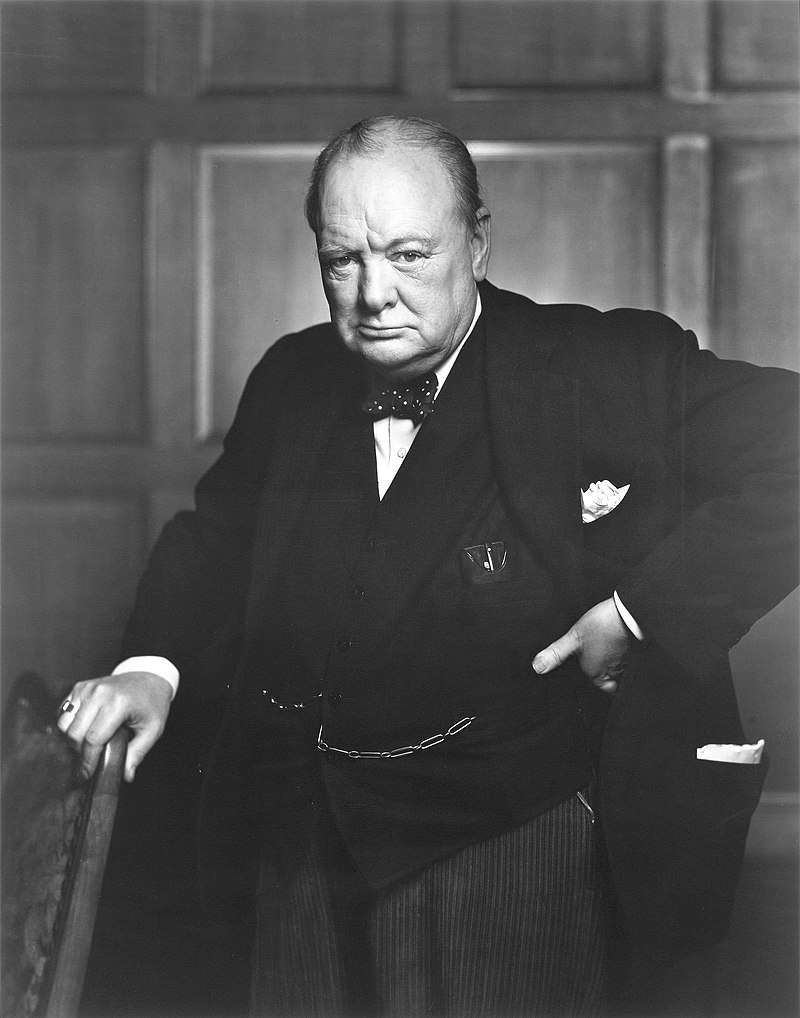
Above: The Roaring Lion, Yousuf Karsh photo of Winston Churchill, Canadian Parliament, Ottawa, Canada, 30 December 1941



